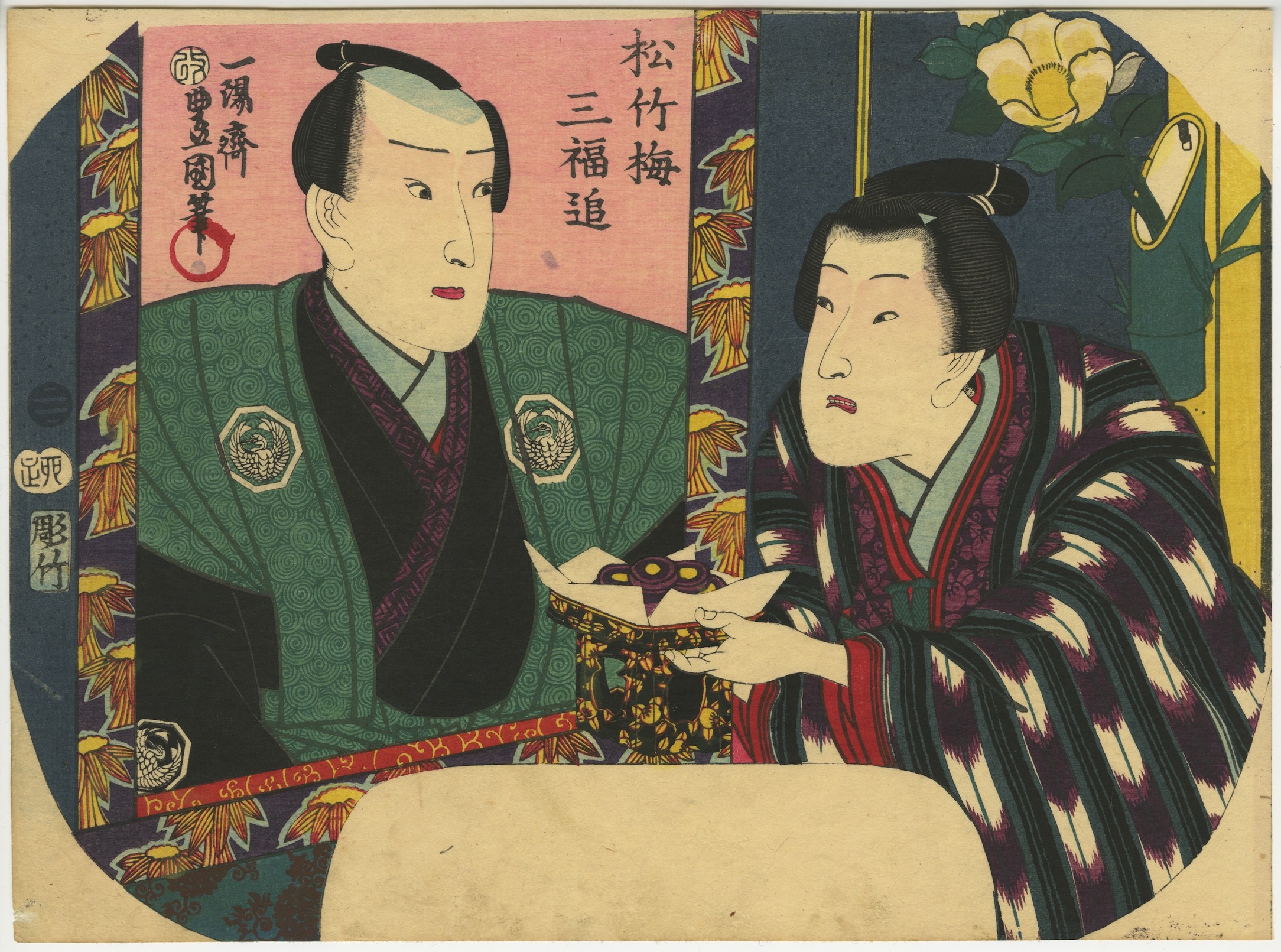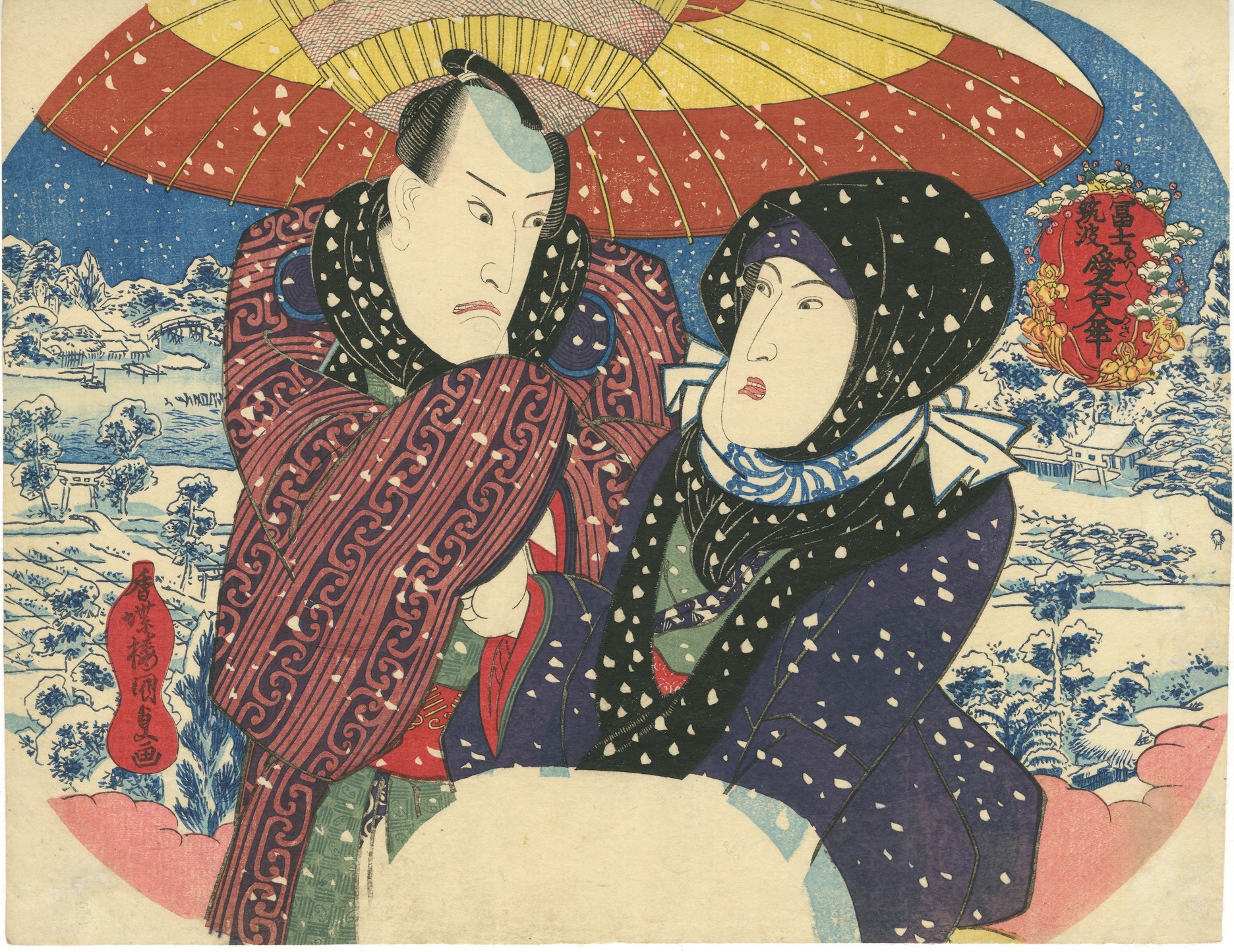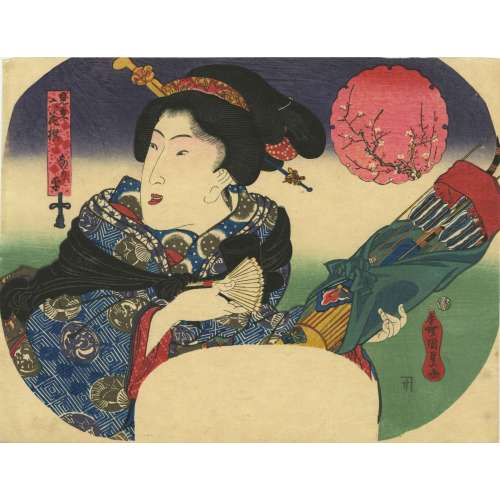Signed: Ichiyosai Kuniyoshi ga in a red cartouche and sealed with paulownia (kiri mon).
Date seal and double nanushi censor seals: Fuku & Muramatsu, 1853 (Kaei 6, 2nd month).
Size: Uchiwa-e (untrimmed fan print) 296 x 230 mm.
 SVJP-0303.2019 |

Signed: Ichiyosai Kuniyoshi ga in a red cartouche and sealed with paulownia (kiri mon).
Date seal and double nanushi censor seals: Fuku & Muramatsu, 1853 (Kaei 6, 2nd month).
Size: Uchiwa-e (untrimmed fan print) 296 x 230 mm.
 SVJP-0303.2019 |




 SVJP-0335.2021 |

 See also Maiko Beach, Harima Province, from the series Views of Famous Places in the Sixty-Odd Provinces,
See also Maiko Beach, Harima Province, from the series Views of Famous Places in the Sixty-Odd Provinces,



 SVJP-0342.2021 |
 |
Kabuki actors Onoe Kikugorō III and Iwai Kumesaburo II. Year: c. 1832; Publisher: No seal; Signed: Kōchōrō Kunisada ga From Kunisada Project. |
 |
Kabuki actors Bandō Minosuke II and Iwai Shijaku I. Year: c. 1832; Publisher: No seal; Signed: Kōchōrō Kunisada ga From Kunisada Project. |
![[Maurice Joly]. Dialogue aux Enfers entre Machiavel et Montesquieu ou la politique de Machiavel au XIX eme Siecle, par Un Contemporain.Publisher: Bruxelles, Imprimerie de A. Mertens et Fils, 1864.](https://varshavskycollection.com/wp-content/uploads/2021/02/LIB-1034-d-scaled-500x500.jpg)
Description: 18.5 x 12 cm, quarter red morocco over marbled boards, spine with raised bands ruled blind, gilt lettering, marbled endpapers.
Collation: 12mo; fep, 3 blanks, π4 1-2712, 292, 3 blanks, fep.; total 180 leaves. Pagination: [6] [2 h.t] [2 t.p.] [i] ii-iii [iv] [1] 2-337 [338] [2 errata] [6]. Bookplate to front pastedown: “Le Mis de Biencourt” (probably Mademoiselle Anna Charles de Biencourt). See other copies: LIB-2913.2021 and LIB-0460.2015. Other related objects: SVVP-0062.2021. The publication was funded by the author and smuggled into France. Contributors: Maurice Joly (French, 1829 – 1878)





![[ROSCOE, Thomas, translator]. Tales of Humour, Gallantry, & Romance, selected and translated from the Italian. With sixteen illustrative Drawings by George Cruikshank. London, Printed for Charles Baldwyn, 1827.](https://varshavskycollection.com/wp-content/uploads/2021/02/LIB-1079-2-scaled-500x500.jpg)
![The Betrothed. From the Italian of Alessandro Manzoni. — London: Richard Bentley (successor to Henry Colburn). Cumming, Dublin; Bell & Bradfute, Edinburgh; Galignani, Paris, 1834. — Series: Standard novels, № XLIII [43]. The Betrothed. Complete in one volume.](https://varshavskycollection.com/wp-content/uploads/2021/02/LIB-1332-g-scaled-500x500.jpg)



Robert Schaap, 2016.